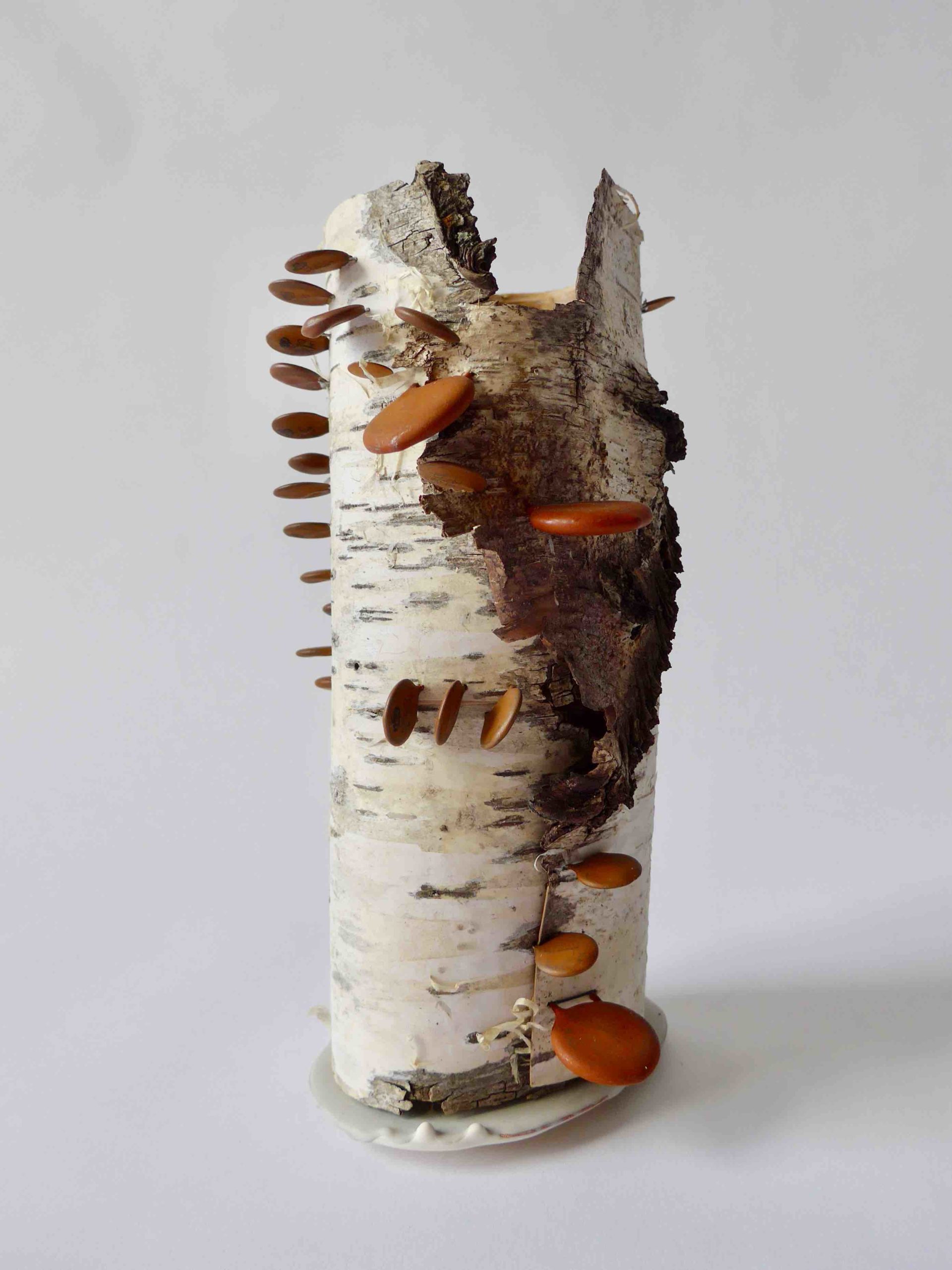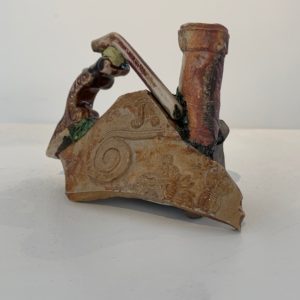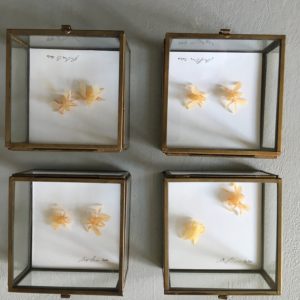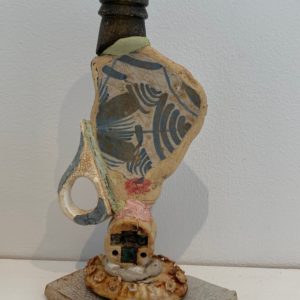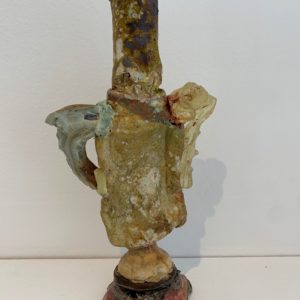£185.00
Potentia cellulae #2 2021
(Power cells #2)
Found birch bark, iron wire, copper, recycled capacitors, Jesmonite
H. 250 mm x Diam. 150mm
Description
Alison Counsell Potentia cellulae #2, is a marvellous delicate table sculpture. It is an assemblage, combining natural materials, resin and metals. On show as part of Nature’s Mysterious Networks, it is part of her ‘Fungus Work’ series, and is typical of her inventive style. Gathering birch bark from her daily walks around Sheffield, these delicate furls of timber form the starting point for her art. Keeping the idea of fungal outgrowths and mycelial connections in mind, she creates little fantastic environments. Her binding with metals and Jesmonite, an ecologically safe resin material, makes them stable.
‘Potentia cellulae’
The title ‘Potentia cellulae’ translates as ‘Power cells’ . For this sculpture Alison has used recycled capacitors, making them look like little fungal outgrowths. So it becomes a witty combination of nature and technology, the found and the re-found, and re-purposed.
About the artist
Alison Counsell is a key exhibitor in Nature’s Mysterious Networks and exhibited in 2019 at GroundWork as part of On the Edge. Calling herself a mapper and metalsmith, as well as artist, she is an experimental metalworker, jeweller and sculptor. She lives on the borders of Sheffield. For many years she taught at Sheffield’s art school, but now concentrates on her own practice.
“I am very fortunate that my day begins with a meditative walk in the countryside around Sheffield. Meditative walking involves keeping my mind open and instinctively following the thoughts and feelings evoked as I experience my surroundings. Sometimes I look up and feel overwhelmed by the vastness of the universe, but most of the time I look down and my imagination is drawn to the detail of the microworld : a smaller natural universe.”
‘Fungus Work’ focuses on the tree bark which the artist gathers on her daily walks around Sheffield. Her forms are inspired by the mycorrhizal network , the symbiotic relationship between plant roots and fungi, which cares for, fortifies and protects the fragile bark.
“There is a diagrammatic feel to my work, imagined fungi, mychorrizal conglomerations, and the growth of new embodiments of lichen.”

